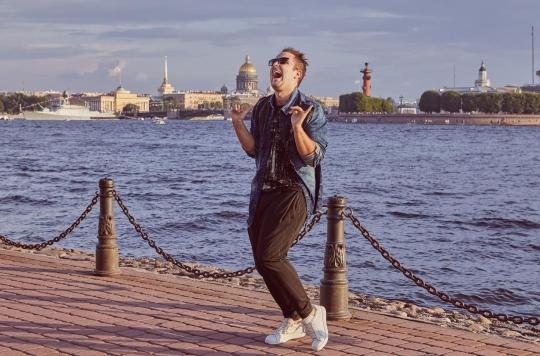For some, a trip can turn into a psychological shock. It’s the traveler’s syndrome: Stendhal syndrome in Florence, Paris, India or Jerusalem syndrome… What are the mental disorders that can affect tourists?

- Traveler’s syndrome is a mental disorder that can temporarily affect some travelers confronted with the reality of the country they are visiting.
- It affects more visitors to certain places loaded with meaning by history, culture or religion: Florence, Jerusalem, India for Westerners or Paris for Japanese. Each of these places has its own syndrome with a variety of symptoms.
“I was in a kind of ecstasy, by the idea of being in Florence […]. Coming out of Santa Croce, I had a heartbeat, life was exhausted at home, I walked with the fear of falling.” This is how Stendhal describes for the first time in Rome, Naples and Florence (published in 1826) a syndrome to which he will give his name, which affects certain travelers who came to visit the jewel of the Italian Renaissance.
The Stendhal or “Florence” syndrome: submersion by art
Stendhal’s syndrome is one of the mental disorders that can temporarily affect some travelers confronted with the reality of the country they are visiting. In the case of Florence, it is the abundance of works of art, as in the main chapel of the Santa Croce basilica where Stendhal was, which provokes a violent emotion in the tourist, which can trigger vertigo, suffocation , tachycardia, an anxiety attack and/or malaise, even the triggering of psychotic crises with loss of the feeling of identity, hallucinations and delusions for the most extreme cases.
Italian psychiatrist Graziella Magherini has listed several hundred cases in hospitals in Florence. It was she who suggested the name of this disorder. In his study on Stendhal syndrome published in the 1990s, it details the condition of its patients, mostly tourists in shock after visiting the Uffizi Gallery: “Their mood darkens, becomes depressed and they experience a disturbing feeling of dissolving their limits, of being fragmented and of leaving their body. These relatively fleeting disorders disappear without leaving any sequelae”. The symptoms would affect single women, under the age of 40, traveling alone more. In general, patients recover by leaving the city.
India Syndrome: Culture Shock
It’s not just in Florence that tourists turn heads. India particularly destabilizes Western tourists. Some are so upset by the cultural gap that they develop great anxiety that can go as far as paranoid delusions of persecution.
The psychiatrist Régis Airault, was able to observe these cases while they were stationed at the consulate in Bombay, which he describes in his book boobies from india, published in 2000. He repatriated several French people affected by this delirium. He evokes for example a woman, who came to recharge her batteries for a few months in India, who had almost drowned while trying to swim to France to join her parents. Another, younger, started running through the streets to kiss the sacred cows during her ten-day stay with a humanitarian association. Claire Kaczynski, also a victim of the syndrome, describes her own experience in her Diary of a Parisian in Jaipur.
The Jerusalem syndrome: the mystical crisis
Cities very steeped in religious meaning, such as Mecca or Jerusalem, are also the source of psychic disorders, equivalent to the preceding syndromes. Overwhelmed by this religious atmosphere, some tourists or pilgrims begin to lose touch with reality and become delirious. The Jerusalem syndrome, which has existed for a very long time, is the best documented.
It is most often expressed by mild disturbances – malaise, moderate anxiety, insomnia – accompanied by an exaltation of thought. But sometimes it can present as a psychotic crisis with confusion, excitement, hallucination and delirium. This condition generally results in the immediate hospitalization or repatriation of the traveller. Among the fifty or so cases recorded each year, with peaks at Christmas and Easter, there are several types of delirium: psychoses, psychotic identification with biblical characters, development of magical ideas… People with a psychiatric history are affected any further.
The Paris syndrome: the disappointed ideal
France also has its own syndrome: the Paris syndrome. They affect tourists turned upside down by the cultural gap between the real France and the image we have of it abroad. Identified in the 1980s by the Japanese psychiatrist Hiroaki Ota, this syndrome would particularly strike the Japanese, distraught by the gap between their idealized vision of Paris and the reality of the city. According to a 2004 study of which Ota is a co-author, 63 Japanese patients (29 men and 34 women) stayed at the Saint-Anne hospital between 1988 and 2004, victims of the Paris syndrome. The particular sensitivity of the Japanese may be due to the popularity of Paris in Japanese culture, in particular due to the idealized vision of Paris that Japanese advertising propagates, inspired by the Montparnasse of the Roaring Twenties or the Paris of Amélie Poulain.
For the majority of patients, the symptoms, initially physical (sudden heat, disorientation, etc.), become psychological: social anxiety, isolation, depression, even depression, withdrawal, feeling of insecurity and persecution. In the most extreme cases, depression can lead tourists to attempt suicide. Despite this, according to the study, “the excessive and somewhat naive feelings of admiration in relation to France persist, contrasting with a very negative opinion of the French”. Rudeness, insecurity and quality of service are particularly targeted.
On the 700,000 annual Japanese visitorsthe number of reported cases is however limited: according to an administrator from the Japanese Embassy in France, only about twenty Japanese tourists per year are affected and Paris remains one of the most popular destinations. The term “syndrome” for the Paris syndrome is also much disputed. There is therefore nothing to prevent you from discovering the city of your dreams.















